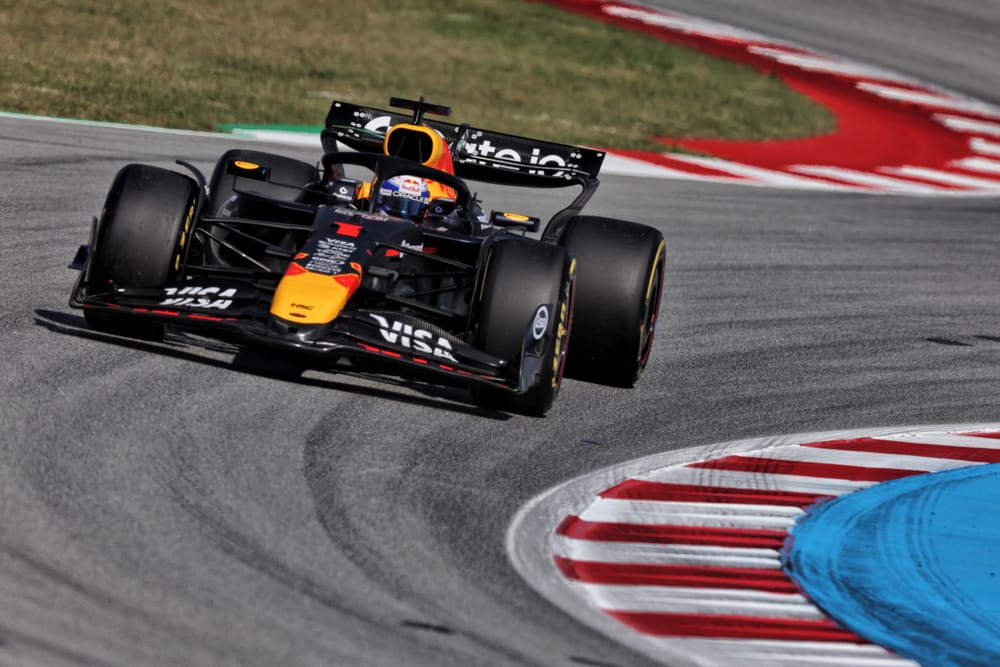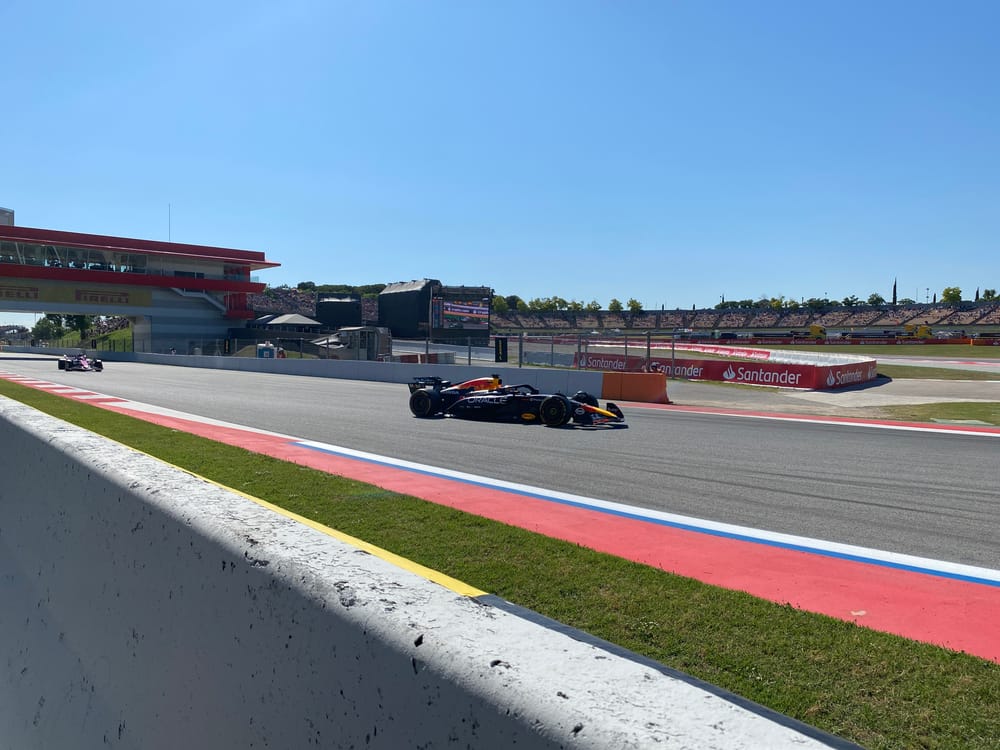The first grand prix Friday of the brave new world of the tighter wing flex regulations looked superficially much like any other.
But there was a bit more dissatisfaction evident from the drivers about the feel of their cars.
It’s impossible at this stage to decouple how much of that was from the more compromised set-ups the new regulations imposed and how much from the combination of a very hot Barcelona track and its long, fast corners.
But there was another discontinuity between the usual GP Friday and this one: Red Bull looked in good shape. Max Verstappen, running the new front wing specially reprofiled for the new regs, was marginally the fastest on the long runs of FP2.
Yes, Barcelona’s high-speed curves might be expected to suit the Red Bull anyway, regardless of any effects of the wing regulation change, but it’s genuinely unusual for the team to be on such good form on the first day of a grand prix weekend.
“It was an OK Friday for us,” said Verstappen, “and I felt a bit happier with the car. However we are still not where we want to be but will just continue to keep working at it. There are always ways where we can look at what we are doing and maximise our performance and find more time.
"Every track is different but we are getting there with the set-up of the car. I have also had Fridays where things weren’t working, so I would say this is a bit more positive."
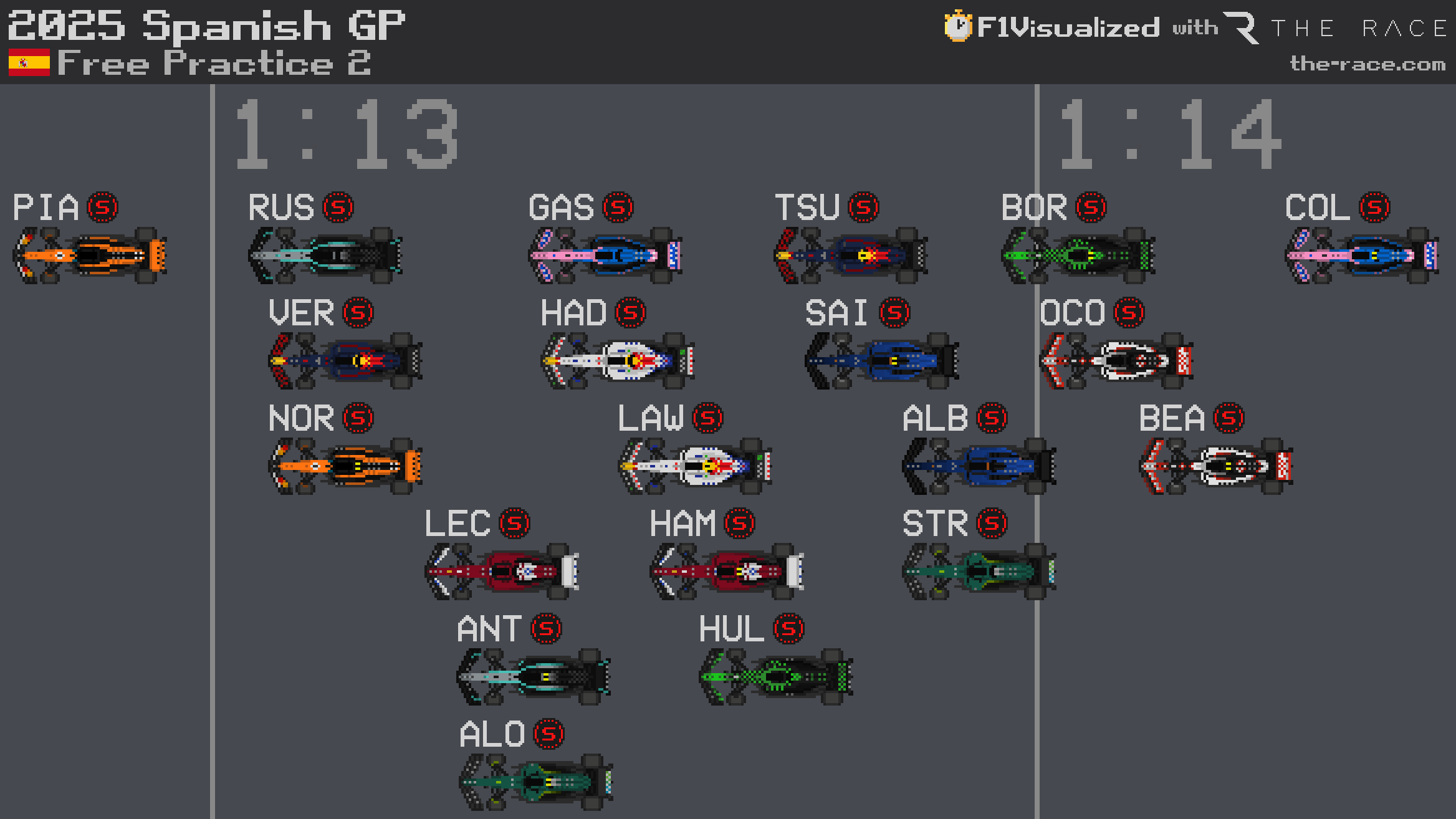
Although Verstappen trailed Oscar Piastri in the headline times by 0.3s, the McLaren driver set his time a few minutes later, taking advantage of an improving track. Verstappen’s run timing was much the same as Lando Norris’ – and they matched each other to the thousandth. Albeit behind George Russell’s Mercedes as well as Piastri.
Let’s reserve judgement for now, and resist the temptation to assign causation to correlation, but Red Bull began this new era in promising form. Verstappen’s first seven-lap run on the mediums averaged exactly a tenth faster than Norris’ nine-lap run on the same rubber. That lap offset suggests that the actual pace difference would be next to nothing. But that’s on the assumption of equal fuel loads and PU modes.
FP2 long-run averages
Verstappen 1m20.09s (7 laps/mediums)
Norris 1m20.19 (9 laps/mediums)
Hamilton 1m20.31s (9 laps/mediums)
Leclerc 1m20.67s (4 laps/mediums)
Russell 1m20.85s (16 laps/mediums)
Piastri 1m20.90s (14 laps/mediums)
Alonso 1m20.92s (10 laps/softs)
Antonelli 1m20.99s (13 laps/softs)
Tsunoda 1m21.02s (8 laps/mediums)
“We know the competition will be particularly tight this weekend,” said McLaren’s Andrea Stella. "As has been the case at previous circuits with similar track characteristics, notably Japan and Imola, so it’s been important to hit the ground running. We've made a good start today and have plenty of data to analyse as we go into Saturday."
There were anomalies everywhere. Piastri’s great single lap pace contrasted with a mediocre long run, which averaged around 1s slower than Verstappen’s (albeit over a significantly longer run) and behind both Ferraris and Russell’s Mercedes.
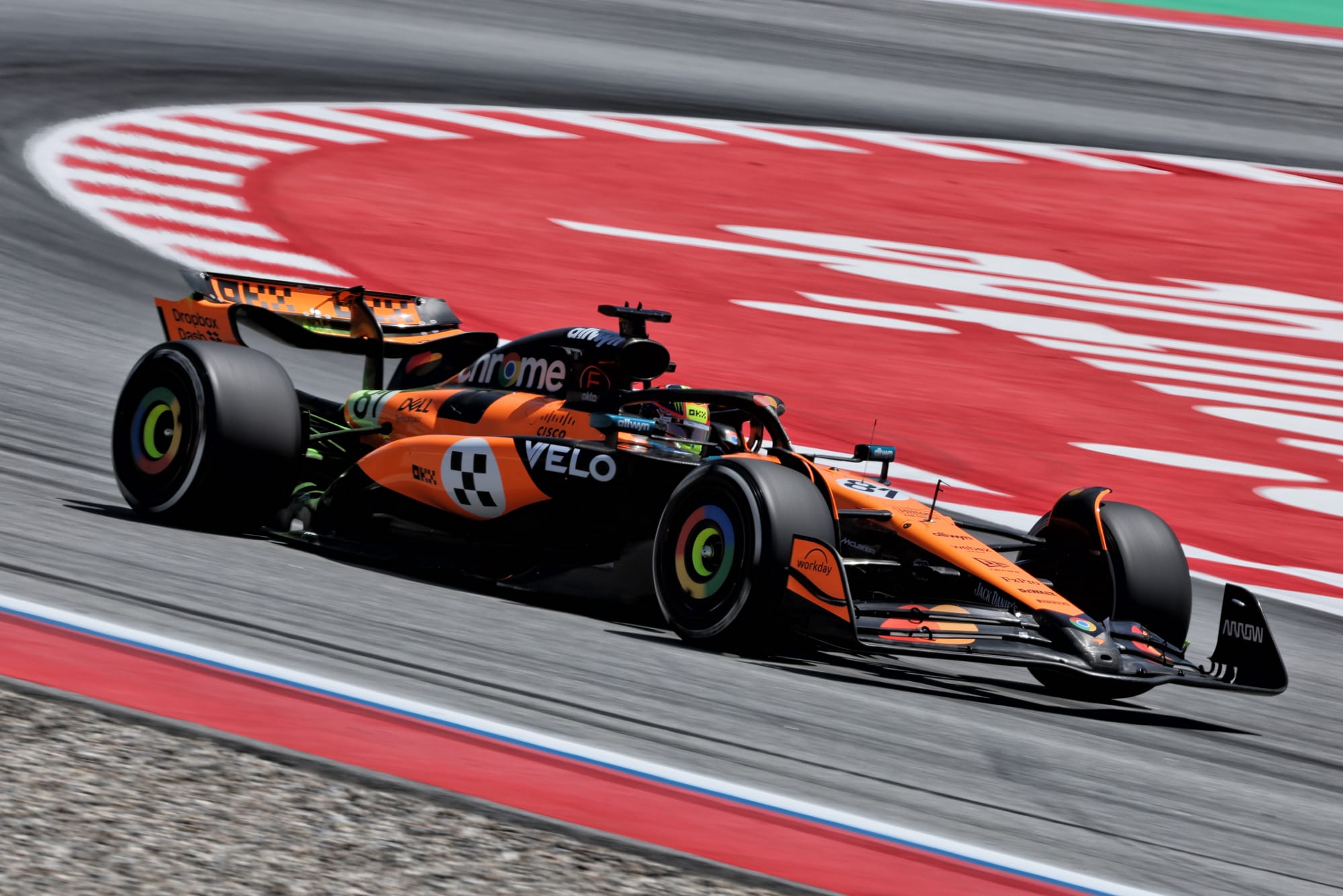
“Yeah, it was tricky today,” Piastri acknowledged. "With these temperatures… we tried a few things today, just trying to make the car a bit faster. Some have been good, some not so good. So we’re learning.”
At Ferrari, Charles Leclerc – around 0.5s off on single-lap pace – gave up on the medium tyre on his long run after just four laps, with graining rears, and switched to the softs. But team-mate Lewis Hamilton persevered with the mediums and had the third-best average (around 0.3s off Verstappen).
But in FP1 Hamilton was promisingly quick over a single lap but suffered horrendous degradation on the hards, while Leclerc was relatively quick on the softs. Come FP2 Hamilton lost the single-lap pace. He explained: “The car was OK in FP1 but quite a lot worse in FP2, but we had some problem which meant we were losing a lot of downforce. Hopefully with that fixed for tomorrow, we will be in a better place.”
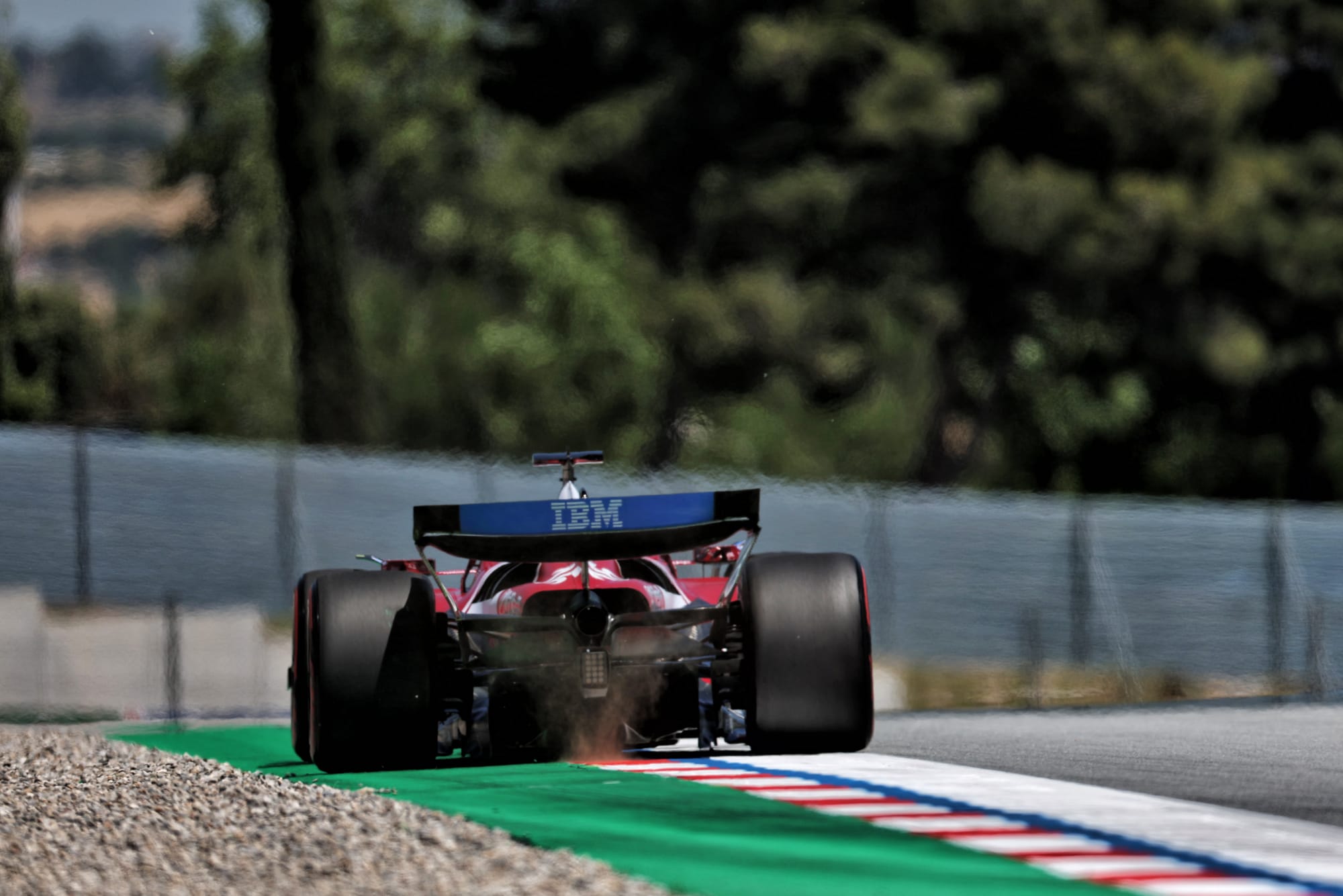
Similarly Leclerc was not despondent, given that he knew coming in that the car’s Monaco form was unlikely to be repeated around a faster circuit. “It’s very warm, so that makes it a bit tricker,” he said. “And the grip is not as what we want but it has not been too bad.
"It has been a bit more positive than we expected coming here, which is good. There is more performance in the car which I hope we will unlock tomorrow. I don’t think we are too far out.”
Both Mercedes drivers were experiencing overheating rear tyres whether they ran the mediums (Russell) or the softs (Antonelli). Fernando Alonso’s form suggested that the Aston Martin may be improving.
Each team was required to run one car on the standard titanium skid plates and the other on steel, as part of an experiment triggered by the Suzuka grass fires. While the steel blocks wear more, teams were running their cars with equivalent ride heights so as to make a clearer comparison.
As such there should in theory not have been any difference in pace between the two types. But for what it’s worth Piastri, Hamilton, Tsunoda and Antonelli ran the steel plates, their respective team-mates the titanium.
Seeing how the competitive plot unfolds over the next couple of days is going to be extra interesting.


